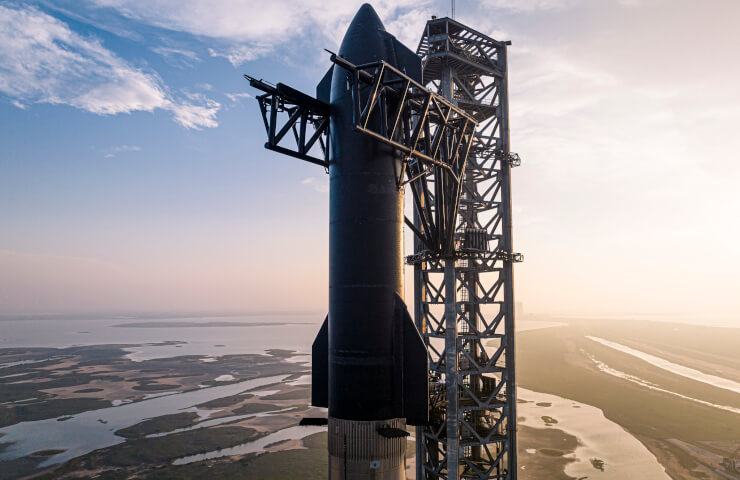SpaceX's Starship, designed to carry astronauts to the moon and beyond, was ready for liftoff Saturday for a second test launch in south Texas, seven months after the spacecraft's first attempt to launch into space ended in a rocket explosion.
The uncrewed launch is scheduled to take place during a 20-minute window beginning at 7 a.m. CST (1300 GMT) at SpaceX's Starbase site in the Gulf of Mexico near Boca Chica. Starship sits atop its towering Super Heavy rocket booster. This will be the second attempt to fly both vehicles together.
Starship and Super Heavy are ready at the launch pad in Starbase, Texas. Targeting Saturday, November 18 for Starship's second integrated flight test → https://t.co/bJFjLCiTbK pic.twitter.com/WZeO1j7qFx
— SpaceX (@SpaceX) November 17, 2023
Goal The mission is to lift the starship off the ground in Texas and launch it into space, reach orbit, and then plunge into Earth's atmosphere and land off the coast of Hawaii. The launch was scheduled for Friday but was pushed back a day due to a last-minute change in flight control equipment.
A successful test flight would be a key step toward achieving SpaceX's ambitions of creating a large, multi-mission spacecraft capable of sending people and cargo back to the Moon later this decade for NASA and eventually to Mars.
Elon Musk—the founder, CEO and chief engineer of SpaceX—also believes that Starship will eventually replace the working the company's Falcon 9 horse as the centerpiece of its launch business, which already launches most of the world's satellites and other commercial payloads into space.
NASA, SpaceX's primary customer, has a significant stake in the success of the Starship spacecraft. which the US space agency expects will play a central role in the Artemis human spaceflight program, the successor to the Apollo missions more than half a century ago. sent astronauts to the Moon for the first time.
Starship's towering first-stage booster, powered by 33 Raptor engines, gives the rocket system a total altitude of approximately 400 feet (122 meters) and provides twice the thrust of the Saturn rocket V, which sent Apollo astronauts to the Moon.
SpaceX is aiming to at least beat the performance of Starship-Super Heavy during a test flight on April 20, when the two-stage spacecraft was blown to pieces less than four minutes into its planned 90-minute flight
Failure at any stage of the test flight would be a major problem for NASA, which is counting on SpaceX's push to quickly develop rockets to quickly get people to the moon as the U.S. competes with China's lunar ambitions.




